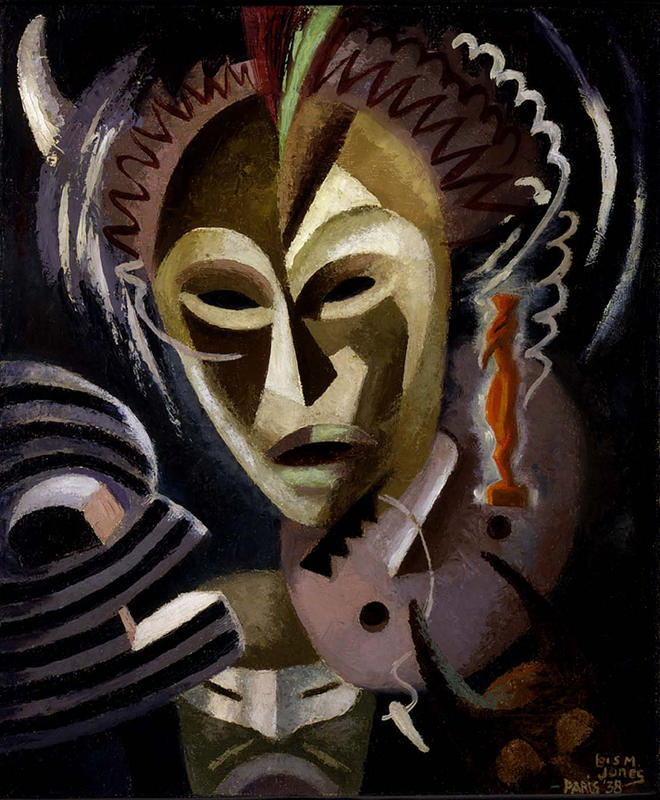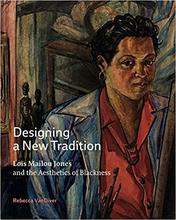More about Les Fétiches
- All
- Info
- Shop

Contributor
Lois Mailou Jones' oil painting Les Fétiches, a cubist interpretation of five African masks, caused quite a stir when she released it.
One of the most notable things about it was that it allowed the artist and fellow critics to address the biases of artistic tradition, and to recognize the influence of African ways and aesthetics on Picasso, Braque and many other "modern" artists. Jones was able to show that the "modern" borrowed heavily from African people, without ever actually acknowledging them.
By training herself thoroughly in the schools of European painting, Jones gained the perspective to recast African art in the image of cubism. "Combining geometric abstraction with a thematic exploration of her African heritage, Jones was...critical of the shallow exoticism" that marked the European engagement with African art.
At the Academie Julian, where she was studying, Jones' professors criticized her use of angular, rationalized forms in her early sketches for Les Fétiches. Jones responded, "I had to remind them of Modigliani and Picasso and all the French artists using the inspiration of Africa, and that if anybody had the right to use it, I did. It was my heritage, so they had to give in." Even today, few students would have the courage to challenge teachers in such a direct way. In 1938, it was a true miracle that Jones stood her ground.
Jones' exploration of the genealogy and hidden influences of modernist painting laid the foundation for Toni Morrison's statement that modernity began with the catastrophic dislocations of the Transatlantic slave trade. In the process of reflecting on the citational, and dishonorable, nature of European painting, it also became possible to examine the ways in which Africa itself is a product of conflicting systems of knowledge, ultimately inseparable from the other continents to which it has been connected.
Sources
- Farebrother, Rachel. The Collage Aesthetic in the Harlem Renaissance. Farnham, UK: Ashgate Publishing, Ltd., 2009.
- Lemke, Siegelinde. Primitivist Modernism: Black Culture and the Origins of Transatlantic Modernism. Oxford: Oxford University Press, 1998.
- Mudimbe, V.Y. The Invention of Africa: Gnosis, Philosophy, and the Order of Knowledge. Bloomington, IN: Indiana University Press, 1988.
Featured Content
Here is what Wikipedia says about Les Fétiches
Les Fétiches is a painting by Lois Mailou Jones. It is in the collection of the Smithsonian American Art Museum in Washington, D.C. in the United States. It is one of many in her body of work featuring African masks and is one of her best-known paintings.
Check out the full Wikipedia article about Les Fétiches













